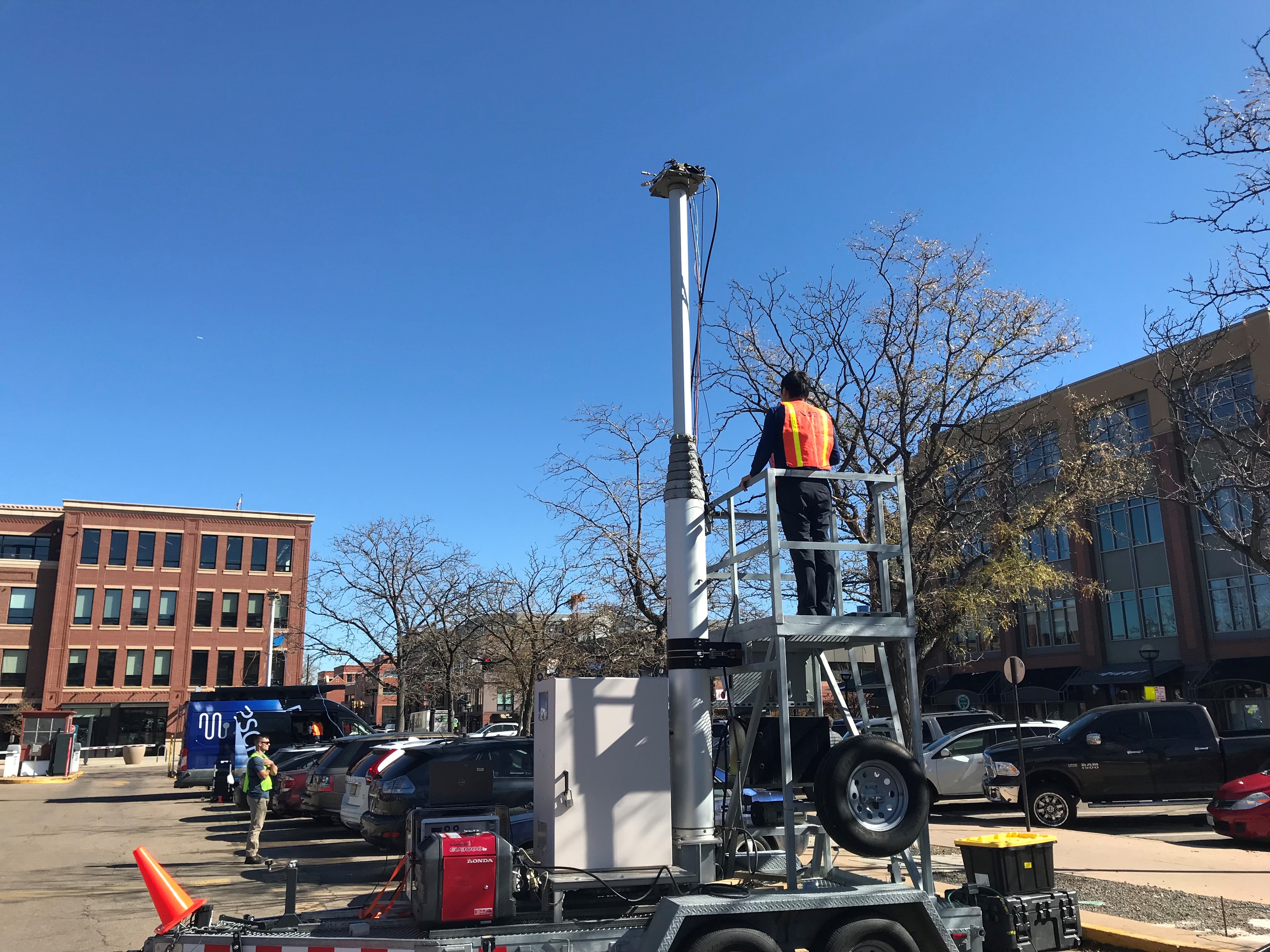2022-05-03 アメリカ国立標準技術研究所(NIST)
 NIST communications researchers traveled to downtown Boulder, Colorado, to verify their channel model for evaluating high-frequency wireless network designs. Sung Yun Jun is checking the alignment of the transmitter, mounted 6 meters high on a mast, with the receiver antenna array on the roof of the blue van. Derek Caudill, barely visible inside the van, is preparing software programs to collect measurement data. Justin Sadinski, in a yellow vest, is checking equipment on the masts.Credit: NIST
NIST communications researchers traveled to downtown Boulder, Colorado, to verify their channel model for evaluating high-frequency wireless network designs. Sung Yun Jun is checking the alignment of the transmitter, mounted 6 meters high on a mast, with the receiver antenna array on the roof of the blue van. Derek Caudill, barely visible inside the van, is preparing software programs to collect measurement data. Justin Sadinski, in a yellow vest, is checking equipment on the masts.Credit: NIST
こうしたネットワークを確実に機能させるため、米国国立標準技術研究所(NIST)の研究者は、無線通信事業者が電柱にWi-Fi機器を取り付ける際の高さを分析するのに役立つ新しいモデルを開発し、検証を行いました。
一般に、最適な高さは伝送周波数とアンテナの設計に依存することが分かっています。無指向性アンテナを用いた従来の無線システムには4メートル前後の低い位置に機器を取り付けるのが適しており、より高いミリ波周波数と狭ビームアンテナを用いた5Gなどの最新システムには6メートルまたは9メートル上の高い位置が適しています。
国際的な団体「Telecom Infra Project」では、電柱にアクセスポイントを設置し、60ギガヘルツ(GHz)の無免許周波数帯でWi-Fiを利用できるようにするアイデアを推進している。技術的な課題としては、従来の携帯電話の周波数よりも高いこの帯域の信号はまばらで、粗い表面から散乱しやすいということがある。
<関連情報>
- https://www.nist.gov/news-events/news/2022/05/wi-fi-may-be-coming-soon-lamppost-near-you
- https://ieeexplore.ieee.org/document/9765658/authors#authors
電柱からの60GHz都市型WiFiアクセスにおける準決定性チャネル伝搬モデル Quasi-Deterministic Channel Propagation Model for 60 GHz Urban WiFi Access from Light Poles
Sung Yun Jun, Chiehping Lai, Derek Caudill, Jian Wang,Jelena Senic,Neeraj Varshney,Camillo Gentile
IEEE Antennas and Wireless Propagation Letters Published:29 April 2022
DOI: 10.1109/LAWP.2022.3171503
Abstract
There is strong impetus by the Telecom Infra Project to exploit the 60 GHz unlicensed band for public WiFi in urban environments, by installing access points on light poles. Although many 60 GHz urban channel measurements have been recorded to date, they have resulted only in path loss models or RMS delay spreads. What is needed at millimeter-wave is a spatially consistent channel model for beamtracking that embodies the characteristics of these short wavelengths sparsity and rough surface scattering such as the Quasi-Deterministic model. In this letter, we fit the model to channel measurements we recorded in an urban environment. The measurements were recorded at 4 m, 6 m, and 9 m antenna heights to investigate the tradeoffs between light pole heights. The large-scale channel metrics between the model and the measurements were shown to match very well.


